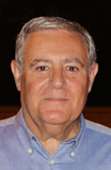2007/07/14 (EN)
FOTOCAT STATUS
Physically, FOTOCAT is an Excel spreadsheet of UFO and IFO cases where an image has been obtained on photo, film or video. It contains various data columns to register the date, time, location, province and country, explanation (if one exists), photographer’s name, special photographic features, references, etc. When completed, the full catalogue will be posted in internet, for an indiscriminate access to the worldwide UFO community.
This section reports contributions received from new collaborators (or from regular ones which most recent contribution is considered outstanding). In addition to the new names cited here, many others are regularly contributing to the enlargement of FOTOCAT.
This section will revisit certain UFO photographs from past decades with a new interpretation.
This section will display a sample of UFO sighting directly reported to FOTOCAT.
Some basic statistics derived from FOTOCAT.
Where regularly we will include any published literary piece on curious phenomenology.
• No entry for this section
UFOWORLD NEWS
This is a brief item report for the serious and critical-minded UFO researcher. Some selected information sources which I judge of interest for gaining knowledge from a scientifically-oriented perspective.
Your volunteer collaboration to the FOTOCAT Project is requested. Please write to: fotocat@anomalia.org
We will supply you with state, regional, provincial or national catalogs for you to check and enlarge.
If you are willing to donate photographic materials, files or literature to be preserved, feel free to use the following postal address:
Vicente-Juan Ballester Olmos
Apartado de Correos 12140
46080 Valencia
Spain
Physically, FOTOCAT is an Excel spreadsheet of UFO and IFO cases where an image has been obtained on photo, film or video. It contains various data columns to register the date, time, location, province and country, explanation (if one exists), photographer’s name, special photographic features, references, etc. When completed, the full catalogue will be posted in internet, for an indiscriminate access to the worldwide UFO community.
- Case Number
Since our last update (January 29th), FOTOCAT has added 1,080 reports to reach the present number of 8,250 entries in the database. This is partially due to an input of near 700 cases from Norway (almost 500 from the Hessdalen area) in the context of a special study we are performing on this country (see below).
We have also added to the listing several photographic cases pre-dating year 1900 that were previously in a separate file. In this way the catalog will not lose a few historical precedents of interest. - New Data Column Added to Spreadsheet
The evolution of FOTOCAT, as a databank of UFO sightings, is slow but sure. From its inception, the catalog's structure has evolved significantly. Now, paired with the preparation of specific research works on Norway, Chile, Argentina, etc., it has been decided to include one more column in the spreadsheet: duration, in order to record the time the phenomenon lasted, expressed in seconds. This is a variable that seems to be important to be retained as a standard feature. We trust this addition will improve the analytical possibilities of the database. For new reports entered, this data is being registered. For past cases, this will be included in line with work progress and the cooperation of local investigators.
This section reports contributions received from new collaborators (or from regular ones which most recent contribution is considered outstanding). In addition to the new names cited here, many others are regularly contributing to the enlargement of FOTOCAT.
- FOTOCAT Report #4 Covers NorwayWith the collaboration of Ole Jonny Brænne, a Norwegian Information Technology’ s database administrator consultant and an experienced researcher from UFO-Norge, we have planned the number 4th paper in the series of papers produced out of this project. Entitled Norway in UFO Photographs, the First Catalogue, it is being prepared with the purpose to be presented to the proceedings of the 7th Biennial European Meeting of the Society for Scientific Exploration, to be held in Roros (Norway), August 17 to 19, 2007. See additional information in http://www.scientificexploration.org/meetings/7thbiennial.php

FOTO 1: Ole Jonny Brænne, co-author with V.J. Ballester Olmos of FOTOCAT Report #4
The paper’s abstract follows:THE HESSDALEN REGION IN NORWAY IS PRESENTLY RECOGNIZED WORLDWIDE AS A LOCATION WHERE ANOMALISTIC LUMINOUS EVENTS HAVE PLACE FREQUENTLY. IN ORDER TO BE A STIMULUS FOR THE LONG-AWAITED, COMPLETE, AND UP-TO-DATE CENSUS OF PHOTOGRAPHED ACTIVITY IN THE AREA, A PRELIMINARY CATALOGUE OF PICTURES, FILMS AND VIDEOS OF ALLEGED UFO PHENOMENA OBTAINED IN NORWAY 1900-2005 HAS BEEN PREPARED. THIS CATALOGUE PLACES THE HESSDALEN PHENOMENA INTO PROPER HISTORICAL AND NATIONAL PERSPECTIVE DURING THE TWO LAST CENTURIES, IN RELATIONSHIP TO OTHER UNIDENTIFIED EVENTS IN THE COUNTRY, AS A REFERENCE FOR OBSERVATIONAL ANOMALOUS, LUMINOUS AND NON-LUMINOUS, EXPLAINED AND UNEXPLAINED AIR PHENOMENA

FOTO 2: Piles of archives ready to be processed to create Norway FOTOCAT.
In order to compile such a major national catalogue, collections of UFO journals, books and UFO archives have been reviewed in detail to look for photographic events reported in Norway. Massive volumes of materials have been checked, as the picture shows:
The result has been quite spectacular and a paper is being writing at this moment to describe the cases collected and to analyze the data. - National Coordinator Named
We have created the figure of “FOTOCAT National Coordinator”. It will be granted to the person who volunteers to be the central point for collection, processing, and data reduction of photographic cases to be provided to FOTOCAT for a given country or State. This person will coordinate with other local ufologists the acquisition and entry of data to the catalog. FOTOCAT Project will gladly consider any offers from elsewhere.
Finish UFO researcher Björn Borg has been appointed National Coordinator for Finland. - Miscellaneous cooperation
We must say thanks to correspondents who are sending us material for the catalogue, like David Kinsella, from Malta and Dimitri, from Greece. Ramón Álvarez, from Barcelona, for sending clippings of news and articles published in the Spanish commercial UFO magazines in the last years. Joan Plana, who is retiring from ufology, is submitting bunches of materials of interest. Anders Liljegren, from Sweden, for sending a lot of issues of journals containing cases for the catalog. And hailing from Chile, Rodrigo Fuenzalida, the leader of AION group, is another source of documentation for reports in his country. To Luis Burgos (Argentina), for his annual reports on UFO cases. And last but not least, Andrés Duarte, a young Chilean scientist whose expertise in image analysis is serving our project to know more about the actual nature of certain events.
Exemplary help is being provided by veteran UFO investigator Tom Benson, from New Jersey (USA). Tom is checking collections of old UFO periodicals and journals like Max Miller’ s Saucers, Gene Duplantier’s Saucers, Space and Science, Fate, and others in search of information covering UFO picture reports, which are mailed to us in the form of Xerox copy. Thank you Tom!
This section will revisit certain UFO photographs from past decades with a new interpretation.
- Recovering Sahara Desert PhotographsWe are happy to announce that we have succeeded to find the originals of two pictures that were taken at 06,20 hours from Sidi Ifni (Spanish Sahara by then, Morocco today), on February 15, 1964. Bad reproductions of these photos have been published in some magazines and even in a couple of books, always without the consent of the author, and with serious mistakes in the description data.

FOTO 3:
Illustration published by L’Astronomie, May 1964, of a “strange luminous phenomenon” sighted on February 9, 1964
We are grateful to Jaume Sacasas, who saw a distant, reddish globe of light in the sky one morning during his military service in North Africa and he decided to take time-exposure pictures of the phenomenon. As an astronomer aficionado, he later found an article in the French journal L’Astronomie of May 1964 where W. Groubê described the observation of a similar sky event on February 9, 1964 from Fès (Morocco). It was also sighted as far as from Oran (Algeria).
The author of the photographs decided to inform of his own observation to the journal, and a brief note was published in the April 1966 issue. Both sightings described a luminous dot as large as 7º in angular size, which was moving slowing and dissipating over 20 minutes. This appearance fits well with a space experiment. We have reviewed launching annals of the Hammaguir French space center in the African desert and found that both on February 9 and 15 Centaure rockets were launched to spread into the atmosphere Na (Sodium) and Ba (Barium) clouds, respectively. This absolutely solves the strange observations.
We are pleased to include here first-generation prints of both photographs. - Airliners and UFOs over Japan
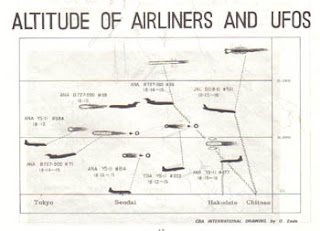
FOTO 6: Graph showing the altitude of 8 airplanes from where the UFO was witnessed. © CBA International.
There was a multiple entry in FOTOCAT for an awesome aerial display over several cities of Japan at 18,14 hours of October 3, 1971. In this particular case, the Japanese CBA International’ s UFO News journal reported in its August-September 1974 issue a wide dossier about the incident, one which was observed by the crews of several airliners.
In Europe, ufologists were informed by the excellent SOBEPS magazine Inforespace, where this case was commented by Jean-Luc Vertongen in September 1976.
Basically, a powerful fireball illuminated the skies near the position where the Moon was placed in the heavens. It was observed by large number of people, who rushed to inform to police stations, meteorological observatories and newspaper offices. For some 30 seconds the atmosphere flared up into flames. At least, 5 different series of pictures were achieved from the cities of Sapporo, Hokkaido and Honshu. We are presenting here 3 of these pictures.FOTO 7: Close-up photograph taken by Ichiro Atoyama of the Hokkaido Shimbun newspaper. © CBA International
Following one of these unwritten laws of ufology by which any massive-sighted UFO sighting is prone to a conventional solution, I resolved to consult the NASA log of spacecraft decays. Space-Track reported only one reentry for this day, the rocket booster of a Russian satellite that had been placed into orbit just 5 days before.
In order to confirm the compatibility of the technical data of the decay with the coordinates of the Japanese observation I managed to ask Alan Pickup, an Edinburgh (Scotland) space expert. In an email dated December 8, 2006, Alan communicated as follows:Thanks for your interesting email and for the attachments.
In Ufology few things are more final than an exact explanation for a UFO sighting. As we have seen in the present example.
I think there is a very good chance that the fireball over Japan on 1971 Oct 3 was, indeed, the decay of the Cosmos 441 rocket, which I believe was the third stage of a Voskhod 11A57 rocket.
Unfortunately, the final elset (element set) I have for this was issued more than 10 hours before the Japanese sighting, so there must be an uncertainty of a few hours (perhaps 3 hours) in the decay time derived from it. Taken alone it indicates a decay shortly before 11:00 UT (=GMT). However, in combination with elsets from a few hours earlier, I estimate that the decay could well have occurred earlier, even as early at 07:00 UT. I believe that a local time in Japan of 18:14 converts to a UT time of 09:14, which is nicely in the spread of possible decay times from my estimates.
If I assume that the decay occurred at around 09:15, then I can estimate where the rocket would be at that time if it had decayed smoothly from where it was at that final elset. Using SkyMap Pro to list its ground track, I get:
Ground track of SL-4 R/B (Decayed 1971-10-03)
Time Latitude Longitude ----------------- ---------- ------------- 03 Oct 1971 09:10 57°36'30"N 122°45'18"E 03 Oct 1971 09:11 54°54'39"N 128°08'36"E 03 Oct 1971 09:12 51°59'02"N 132°47'53"E 03 Oct 1971 09:13 48°52'34"N 136°50'10"E 03 Oct 1971 09:14 45°37'33"N 140°21'51"E 03 Oct 1971 09:15 42°15'44"N 143°28'23"E 03 Oct 1971 09:16 38°48'27"N 146°14'21"E 03 Oct 1971 09:17 35°16'48"N 148°43'29"E 03 Oct 1971 09:18 31°41'35"N 150°58'54"E 03 Oct 1971 09:19 28°03'31"N 153°03'06"E 03 Oct 1971 09:20 24°23'06"N 154°58'13"E
I have omitted any height estimate here, but if it was visible during re-entry then it is likely to have been in the range of about 90-30 km above ground. However, do not make the mistake of assuming that it would have been falling sharply while it was burning up, the drop in altitude the during each minute while it was self-luminous may have been of the order of 10 km or so.
As you see, this track follows a SE path directly over the island of Hokkaido between 09:14 and 09:15 UT, passing (I think) less than 100 km NE of Sapporo. There must be a little uncertainty about its position along the path. If it were to have been one minute early then the path would be exactly 15 minutes of longitude E of this line, and if it were one minute late then the path would shift W by the same amount. In fact, I doubt whether the time error would have been as much as this.
The photos from Sapporo suggest that the object passed just above the (almost full) Moon, which would have been 20 degrees high in the ESE (azimuth 110 degrees) at 18:14 local time. Although there appear to be a few stars on the images, I am unable to identify these - there was obviously some cloud which was makes the identification difficult and some of the "stars" may not be real. However, I think that the direction of motion as seen from Sapporo (disappearing towards the SE, to the right of the Moon), as well as the sightings from the other locations (though you don't report angular altitudes), are in good agreement with this re-entry as being the cause of the reports. I suspect that the sighting from the Tokyo area must have put the object very low across the NE sky.
This section will display a sample of UFO sighting directly reported to FOTOCAT.
- Unpublished Images for Missile Launch on March 5, 1979
Our colleague Ole Henningsen, a respected ufologist from Denmark, has been kind enough to transmit to us a few pictures taken by Viktor Svendsen, a Danish tourist in the south coast of the Gran Canary island (Canary Islands, Spain) on the evening of March 5, 1979, when the effects of the firing of 2 Poseidon missiles, launched from an submerged submarine platform by the US Navy in the Atlantic test range were sighted by plenty of citizens, local and visitors. The images are not very impressive but these add to a large collection of such prints FOTOCAT Project has assembled together of an occurrence that initially was taken to be a UFO.FOTO 10: At 20,07 hours, a missile is vectored from the horizon to the heights. Many fortuned witnesses could take photographs of this fiery vision. © V. Svendsen/SUFOI.
In fact, that dusk there were 4 missiles launched by the US Navy in total, but only the after-effects of two of them were observed from the Canary archipelago. Readers interested in learning more about this are advised to read the paper “¡Identificados! Los OVNIS de Canarias fueron misiles Poseidón” (by Vicente-Juan Ballester Olmos and Ricardo Campo), Revista de Aeronáutica y Astronáutica, March 2001, in http://www.ikaros.org.es/misiles.htm French translation in La Gazette Fortéenne, August 2002, pages 229-246, and English translation in International UFO Reporter, July 2005, pages 3-9 and 26.
By coincidence, I was revising the CEI photographic file on this event when the new photos came in. And I happened to find a yet unknown picture of this case amongst the CEI materials. Although a low-quality photo, it shows the magnificent plume left by the ballistic missile in its flight. Unfortunately, we do not know who took it or from where in the Canary Islands.
FOTO 12
Speaking of recovering old pictures and rocket firings, Ole Henningsen also sent us another snapshot taken by a Danish tourist in Sóller, Mallorca Island, Spain, on the evening of June 12, 1974. At 22,00 hours of that day, a MSBS ballistic missile was launched from the Centre D’Essais des Landes, Biscarrosse, France. The luminous trace of the firing was sighted by multitudes from Spain and France many series of pictures were achieved by observers.
Some basic statistics derived from FOTOCAT.
- Reviewing the Decade of 50s
There are 660 reports within FOTOCAT for the period 1950-1958. This is the distribution of cases by year and nature:YEAR REPORTS # UFO (# and %) IFO (# and %) 1950 71 26 (37%) 45 (63%) 1951 22 10 (45%) 12 (55%) 1952 102 55 (54%) 47 (46%) 1953 54 27 (50%) 27 (50%) 1954 111 54 (49%) 57 (51%) 1955 51 33 (65%) 18 (35%) 1956 75 38 (51%) 37 (49%) 1957 72 33 (46%) 39 (54%) 1958 54 23 (43%) 31 (57%) 1959 48 21 (44%) 27 (56%) ______ ________ ________ TOTAL 660 320 (48.5%) 340 (51.5)
Clearly, wave years pop up in 1952 and 1954, with double of cases reported than the rest of years. In terms of report harvesting, 1951 is the poorest year, with half of the reports of non-wave years.
Roughly, 50% of cases are explained and 50% unexplained. The IFO rate is 3 percent points over the UFO rate, however. This average is rather constant along the decade, only years 1950 and 1955 deviate from this pattern, yet in opposite ways. 1950 has the largest percentage of solved events, probably by the effect of the numerous balloons pictured over Mexico, the false humanoid photographs of April, and various Adamski pictures in the tally. On the contrary, 1955 shows the highest rate in unsolved stories. I do not have a clue.
In graphic terms, the plot of cases by year follows:
On the distribution of events by country, we have records from 45 different nations of the world, plus a few cases occurred in the Ocean. How many countries contribute over 1% (or 7 reports) of the total? The following 16:356-USA 52-ITALY 29-FRANCE 20-JAPAN 17-BRAZIL 16-AUSTRALIA 15-UK 15-MEXICO 14-SPAIN 9-NORWAY 9-SWEDEN 7-ARGENTINA 7-CANADA 7-NEW ZEALAND 7-VENEZUELA 7-SOUTH AFRICA
Not unexpectedly, the United States of America is the star country, outweighing considerably the figures from any other country. In fact, USA itself represents 54% of the total. Italy and France follow, in a lowest rank, basically because of their prominent input during the 1954 wave.
Where regularly we will include any published literary piece on curious phenomenology.
• No entry for this section
UFOWORLD NEWS
This is a brief item report for the serious and critical-minded UFO researcher. Some selected information sources which I judge of interest for gaining knowledge from a scientifically-oriented perspective.
- Obituary of Rafael Farriols and Some Memories

FOTO 13: One of the views of the “flying saucer”, allegedly flying over El Saler beach (Valencia), on March 5 , 1969.
Last December 27th, died the Catalonian businessman Rafael Farriols Calvo, best known in this field of ours as co-author in 1969 with Antonio Ribera of the book Un Caso Perfecto (A Perfect Case), dedicated to the prank photographs taken at San José de Valderas (Madrid) on June 1967. Obsessed up to compulsive limits with the so-called reports from the UMMO planet (morbidly created in reality by a psychologist from Madrid, José Luis Jordán Peña), Farriols collected the largest existing archive around this myth, one which has just deceived to credulous people and to those who have become hypnotized by their preconceived beliefs.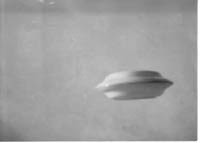
FOTO 14: Close-up of another of the prints of the series.
In relation to this sad news, I would like to remember an anecdote related to first my personal meeting with Rafael Farriols. In April 1969 I had founded and was managing CEONI, a UFO association based in the Valencia University campus. One day, while collecting the mail in our premises allocated by a University College, I found a letter (with no sender information) which described the sighting of a flying saucer maneuvering over the nearby El Saler beach on March 5, 1969. A set of photographic prints were enclosed. The special feature was that on the base of the craft there was the UMMO emblem )┼( One that reminds us the Russian Cyrillic character Ж.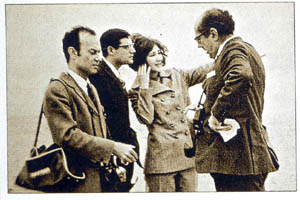
FOTO 15: From left to right, Rafael Farriols, V.J. Ballester Olmos, CEONI staff, and Antonio Ribera. El Saler (Valencia), April 1969.
The sender, without advancing any personal identification clue, was simply dating me for an encounter on the following Saturday evening in a nearby coffee shop. A café, precisely, where CEONI members used to go to have a drink after our weekly UFO meetings. Without hesitating, I called Antonio Ribera in Barcelona (our national expert on UMMO) to inform him about the photographs. Next Saturday, the Ribera-Farriols team was in Valencia in search of impossible proofs. To make a long story short, when I was to the established meeting point, no-one made up, causing a general deception. On the following day, a few of us, including our two distinguished visitors, made an expedition tour to the Valencia beach. As expected, we got no confirming information about the reported UFO presence.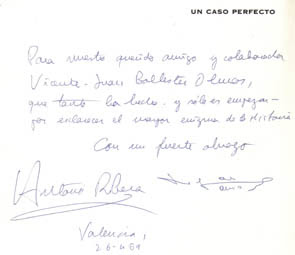
FOTO 16: Final memory, a kind inscription from the two authors of the book Un Caso Perfecto.
Months later, a couple, both students of Medicine and members of CEONI, came to confess to me that it had been just an innocent hoax but they were frightened when they appeared in our center and realized the effect it had caused, including the presence of these two ufological gurus. The truth is that that first and unique hoax I have received in my life –when I was just nineteen- served me to become even more down to earth and it helped to give shape to a healthy skepticism that I believe it must be a guide to any researcher who searches for the truth in this rarified subject matter.
Rafael Farriols, R.I.P.
Your volunteer collaboration to the FOTOCAT Project is requested. Please write to: fotocat@anomalia.org
We will supply you with state, regional, provincial or national catalogs for you to check and enlarge.
If you are willing to donate photographic materials, files or literature to be preserved, feel free to use the following postal address:
Vicente-Juan Ballester Olmos
Apartado de Correos 12140
46080 Valencia
Spain
